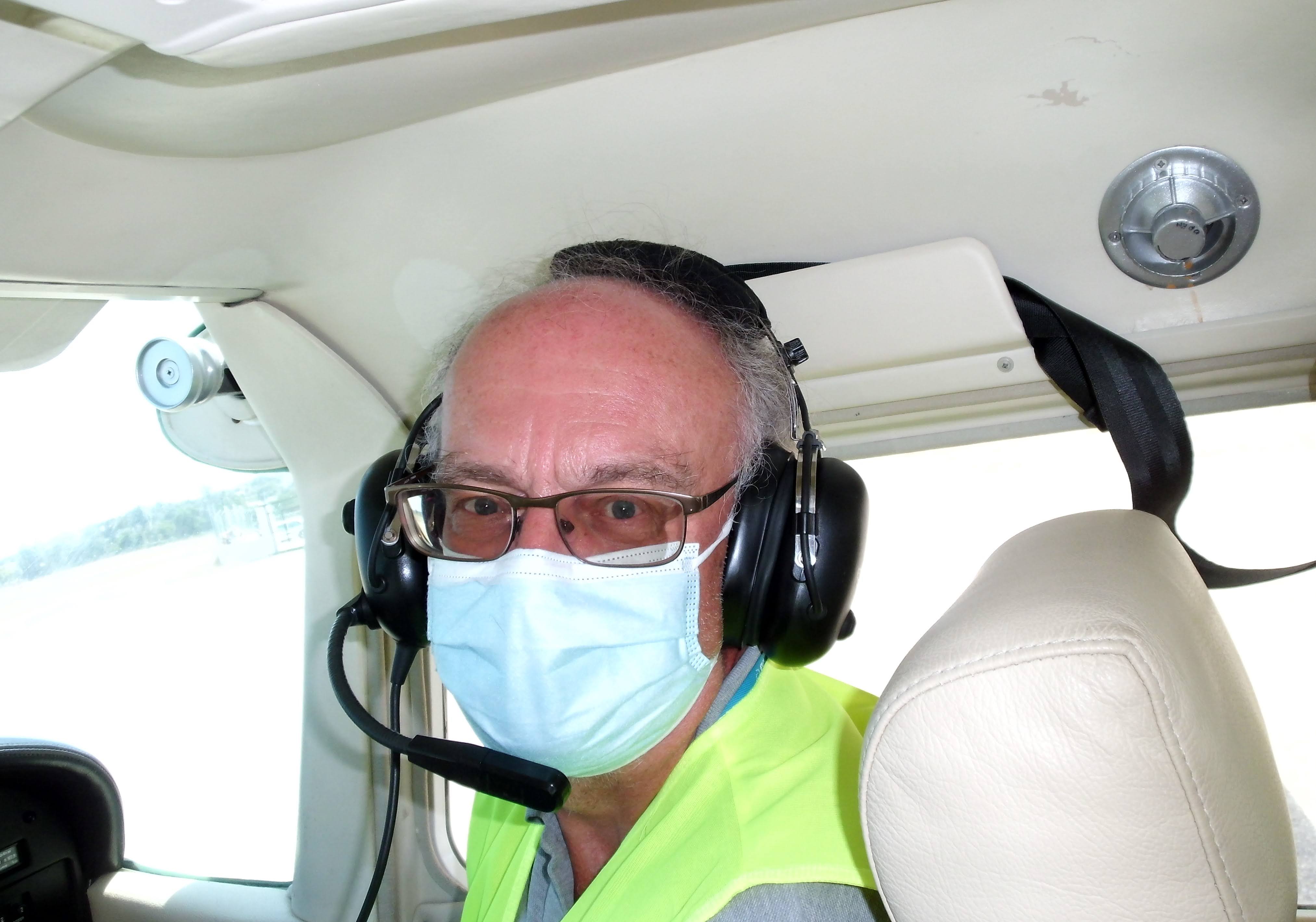Aviator
-
Bailey, L M
Flt-Lt. L. M. Bailey, A.F.C. Represented RAF Duxford in the Air League Challenge Cup in 1923
-
Bailey, Mary
Hon. Lady Mary Bailey
Royal Aero Club Certificate No. 8067 (26 Jan 1927)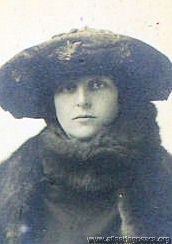 1927, aged 37
1927, aged 37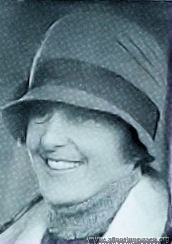
1930, aged 40
The Hon. Mary Westenra, b. 1 December 1890 in London but brought up mainly in County Monaghan, Ireland.
Her family's home was Rossmore Castle, which was a grand affair built in the 1820s, with turrets, a vast drawing room and servants' quarters, not to mention about 20 cottages on the estate:
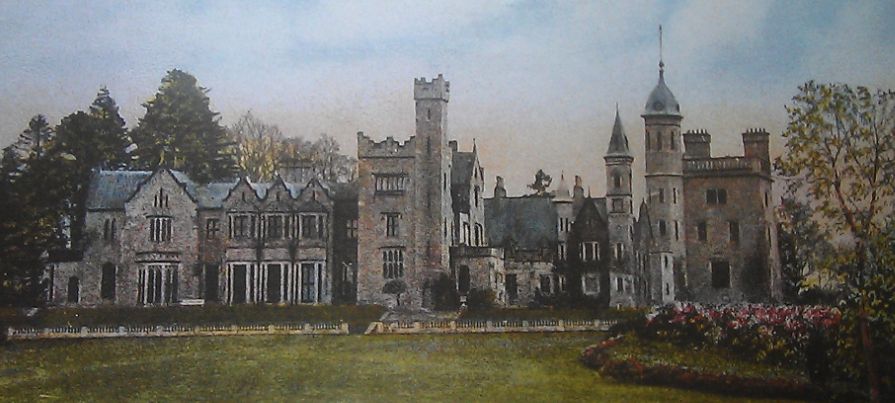 www.monaghan.ie/museum
www.monaghan.ie/museumHere she is, with her brother Willie, and parents (Mittie and Derry) on a set of steps by the house, in 1913:
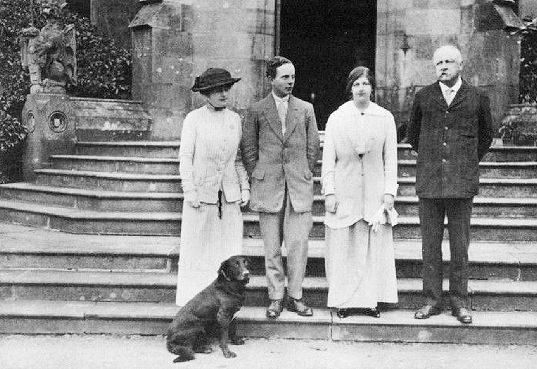 Throttle Full Open
Throttle Full OpenI visited County Monaghan in 2014 and asked in the local museum if they knew where the house was. 'Oh yes' they said, 'but it was demolished forty years ago'. It seems that it became severely infested with dry rot in the 1940s, was abandoned and, indeed, demolished in 1975.
Anyway, here's all that's left of it now:
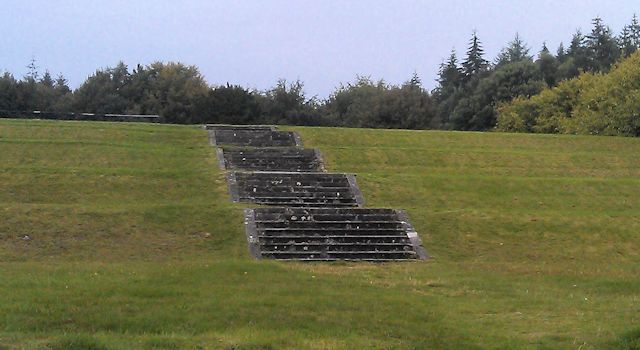
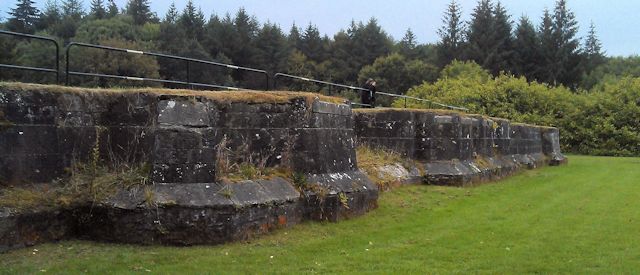
Mary married South African mining magnate and white suprematist politician Sir Abe Bailey in September 1911 (so, she was 21, he was nearly 47; his first wife had died in 1902 and he already had two children). They then had five more children - 2 boys and 3 girls.
She learnt to fly at the London Aeroplane Club in 1926. She was the first woman to fly across the Irish Sea 'by the long route' from Chester to Dublin, the following August.
The following March (1928) she began a solo tour to Cape Town, via Malta and then Cairo. Here, her plane was locked away by order of the Governor-General of the Sudan to prevent her from continuing alone, so she contacted Dick Bentley (who had flown to the Cape a few weeks before) to escort her in his own aeroplane over the "dangerous area of the southern Sudan". She then crashed in Tanganyika, writing off her aeroplane (she said it was her fault), but Abe made arrangements for a replacement Moth to be delivered from Pretoria and she continued, despite having 'flu. Abe was there to meet her when she arrived at the end of April.
The return journey was made via the western 'French' route - the Belgian Congo, Angola and the French Congo. She finally arrived back at Croydon on 16 January, 1929, 10 months after she left. It was "undoubtedly one of the finest performances ever put up by a woman pilot."
Lady Bailey was "so modest, so vague and so charming", and was "surprised that anyone should make a fuss about her journey".
A Director of National Flying Services in 1929, (with Frederick Guest, Colonel the Master of Sempill, Alan Cobham, etc); she was also awarded the Brittania Trophy by the Royal Aero Club, and then made a Dame of the British Empire in 1930 for "services to aviation".
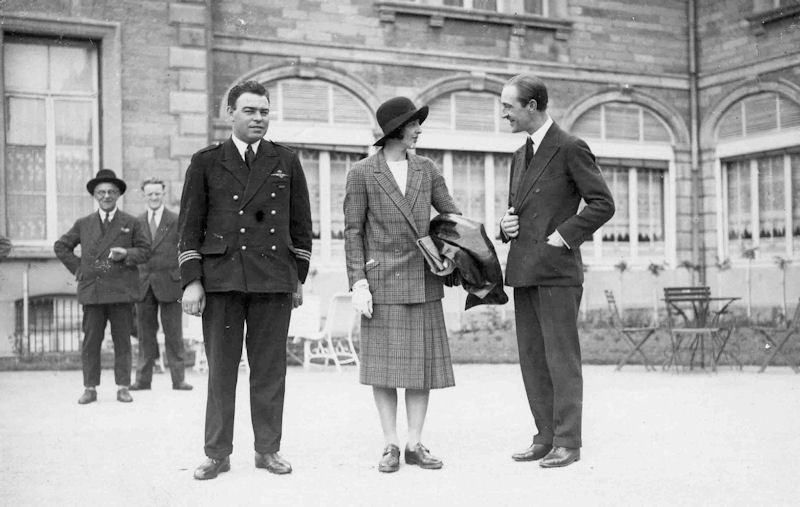
At the Chateau d'Ardennes in 1930
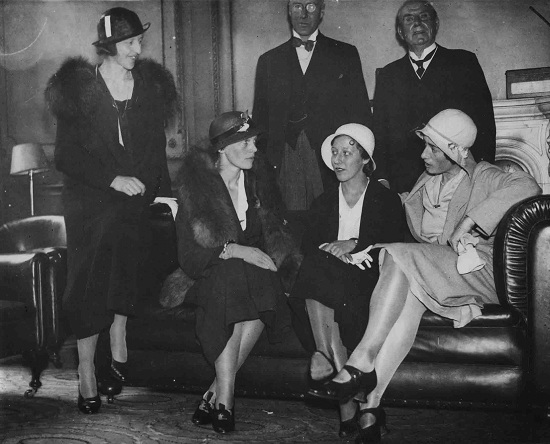
She was a guest at Amelia Earhart's reception at the Royal Aero Club in May 1932.
In early 1933 she gave everyone a scare by disappearing for several days on another solo flight to Cape Town; thankfully, she had only got lost, run low on fuel and landed safely in the Sahara. [Bert Hinkler, who disappeared at about the same time, was killed in the Alps]. She then flew back to England and almost immediately went down with a bout of typhoid, but recovered in time to compete in the King's Cup later in the year.
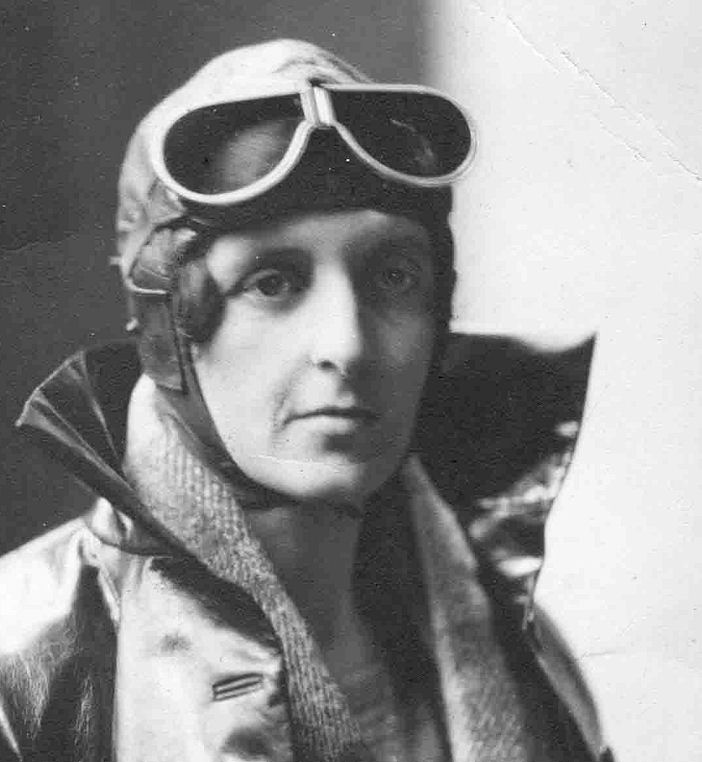
After that, she concentrated on looking after their horses, giving and attending loads more balls and receptions, and marrying off their many children.
When Abe died in 1940, she settled near Cape Town (still keeping a house in Rutland) and died there 29th August 1960 aged 69.
Lady Mary's aeroplanes were:
a 1926 DH.60 Moth (G-EBPU),
a 1927 DH.60X Moth (G-EBSF, the one she crashed in Tanganyika),
the replacement DH.60X Moth (G-EBTG, which Abe bought in Nairobi);
a 1928 DH.60G Gipsy Moth (G-AABN);
a 1929 DH.60G Gipsy Moth (G-AAEE) and
a 1930 DH.80A Puss Moth, G-AAYA.
-
Baines, James Keith Campbell
James Keith Campbell Baines
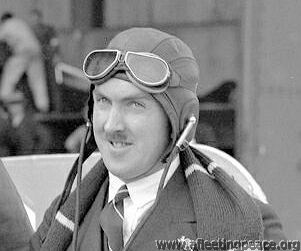
Born 21st December 1905 in Woodford, Essex. His father, Louis, was a tea and indigo merchant; his elder sister Phillis was born in Calcutta. In 1901 the family lived in Tiverton, Devon; Louis, Lillian, Phillis, Jack, Silsen, Kathleen, and their 3 domestic servants.
He was killed, aged 28, during the MacRobertson Race on 23rd October 1934 when he and Gilman crashed in Italy.
Joined the N.Z.A.F. in 1925, training at Palmerston North and Wairapa.
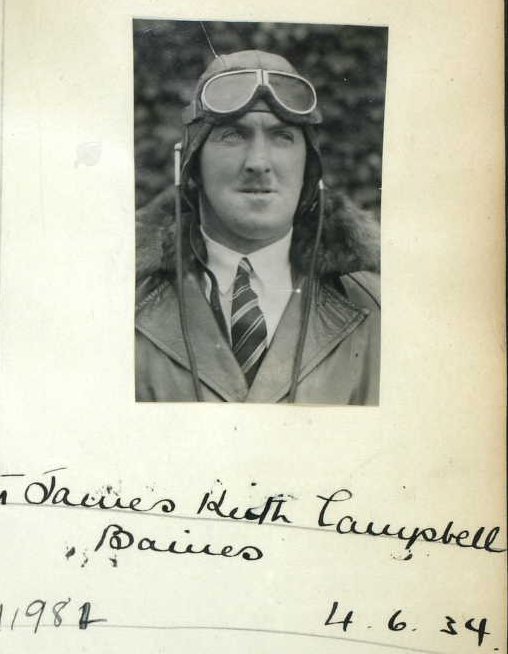
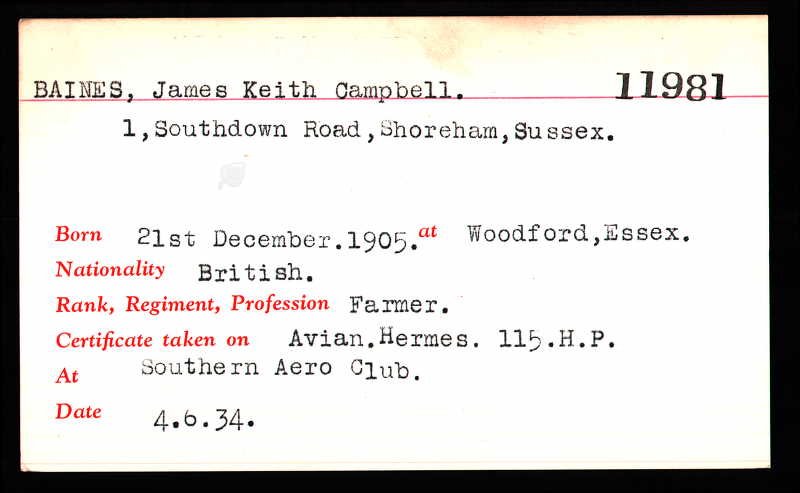
He arrived in London from New Zealand on March 26, 1934. He sold his Avro "Avian," just before departure, to a brother-officer in the N.Z.A.F. Reserve, and embarked for England in January, via Australia and South Africa. During the ship's stay in Sydney, Melbourne, Adelaide, Perth and Capetown, Baines kept his hand in with flights on machines hired from the local aero clubs. At the time of the Race, he had flown 3,860 hr.
His "Fox" was purchased at Hounslow from Anderson Aircraft and was modified at Hanworth by N.F.S., Ltd., as a replica of the sister-machine entered by Raymond Parer. Its capacity was increased to 175 galls., and its range to about 1,750 miles.
"Whilst awaiting delivery of the "Fox," Baines has been making approach landings at Mildenhall. He expresses himself delighted with the new aerodrome, its freedom from obstruction, its perfect run, and its billiard-table surface."
-------
In July, 1934, James wrote to the organising committee for the race and asked them to 'change the name of the nominator from myself to Mrs Lilian M Campbell-Baines, my mother, who has made it possible for me to enter the Races'.
Baines and Gilman crashed on the 10th of October 1934, and the funeral, at the British Cemetery at Naples, was held on the 26th. The British Air Attache in Rome, Group Captain T Hetherington, undertook all the funeral arrangements; the photographs of the ceremony 'very clearly indicated the profound sympathy of the Italian nation and the honours bestowed on these two officers'.
Sadly, James' brother had also been killed earlier in the year in a gun accident; their eldest brother had been killed during WWI also flying, aged only 19.
Although they had insured the aeroplane, Baines and Gilman hadn't taken out any life insurance.
-
Baker, Valentine Henry
Capt Valentine Henry Baker MC AFC
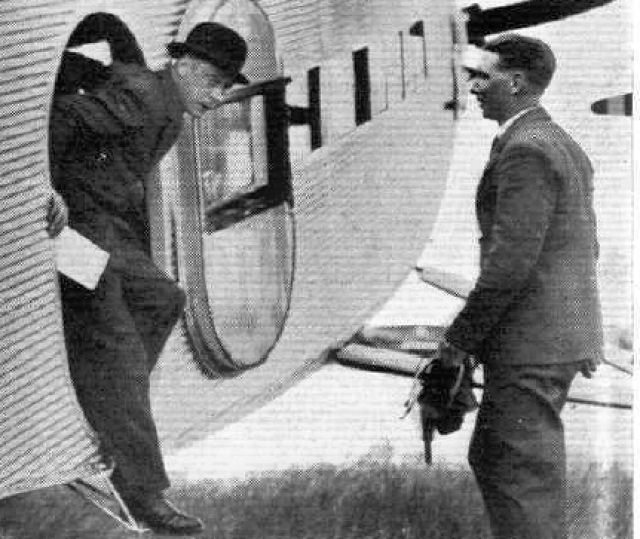 seen here with HRH the Prince of Wales, in 1931
seen here with HRH the Prince of Wales, in 1931b. 1888
In 1931, chief instructor at Heston Aerodrome.
"Baker founded the air school at Heston and it became the most famous flight school in the United Kingdom.
During his career as an instructor in England, Baker personally taught many notable pupils, including Edward, Prince of Wales, Lord Londonderry of the Air Ministry, Lord Lloyd, Amy Johnson,Prince George, Duke of Kent, and Grace Marguerite Hay Drummond-Hay.
In 1934, Baker left Heston to join his friend James Martin to found the Martin-Baker Aircraft Company, where Baker was the company's test pilot.
Killed 12 September 1942; "during a test flight of the Martin-Baker MB 3 prototype, the engine seized and he was forced into an emergency landing, during which the aircraft struck a tree stump and he was killed. Baker's death affected his partner deeply, so much so that pilot safety became Martin's primary focus and led to the reorganisation of the company to focus on ejection seats."
-
Balfour, Lionel Maxwell Joachim
Mr Lionel Maxwell Joachim Balfour
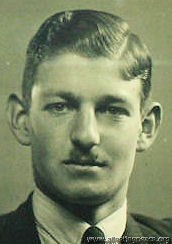 photo: 1930, aged 25
photo: 1930, aged 25b. 11 Dec 1905.
Ian Long kindly tells me that " Christopher Balfour, Lionel's son, published a lovely book about him in 1999 called "Spithead Express: The Pre-War Island Air Ferry and Post-War Plans" (Magna Press, ISBN 0 95194423 8 7), copies of which can be found on Ebay from time to time.""Lionel gained a degree in engineering and served his apprenticeship at English Electric. He was left with a substantial amount of money following the death of his mother in 1928. He owned Puss Moth G-ABIY, which his sister Rachel had in fact won in a raffle. He housed it at Hanworth with his Moth G-ABJH.He was aware of the need for an air link between Portsmouth and Ryde on the Isle of Wight and put a considerable amount of money into Wight Aviation, of which he was a director, in 1931. A Klemm G-ABJX and a Spartan 3-seater G-ABLJ were used by the firm. In 1932, the company attracted Francis 'Lux' Luxmoore who also became a director and the name was changed to Portsmouth, Southsea & Isle of Wight Aviation (P.S.&I.O.W.A.). The venture proved to be a great success, with their pale blue, buff and silver livery. Airspeed were keen to use P.S.&I.O.W.A. to show off their products and the air ferry used 6 Couriers, 1 Ferry and 1 Envoy. The air ferry were also keen Monospar customers."Another director of PS&IOWA was Sir Charles Rose (q.v.).He married Lady Myrtle, 24-year old third daughter of the Admiral of the Fleet Lord Jellicoe, in 1932, and here they are after the nuptuals:
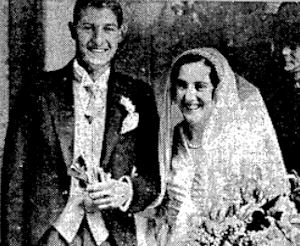
She died after an operation on 10 November, 1945 though, and he married twice more.
"All of the air ferry aircraft were impressed into service when WWII began and so the company's engineers began to carry out contract work for their neighbours, Airspeed. By the time the war began the company had already manufactured 31 pairs of Oxford wings for Airspeed. Balfour's company undertook a complete rebuild of an Oxford and thus became a part of the Nuffield repair organisation. By the time the war ended they had repaired or modified over 1,000 Oxfords. Keen to restart the air ferry using De Havilland Dragon Rapides, Balfour managed to get a severely restricted charter service going but it ceased by the end of 1947. Now presented as a fully fledged engineering company it looked to others sources of revenue. P.S.&I.O.W.A. became Portsmouth Aviation and designed and built the Portsmouth Aerocar G-AGTG. It was displayed at the 1947 and 1948 S.B.A.C. air shows. Despite great interest in the Aerocar at home and in India, the venture was stalled. During the latter half of the 20th century the company were constructing military ordnance carriers and loaders.
Lionel Balfour died in 1973."
-
Ballantine, Ronald George
Ronald George Ballantine 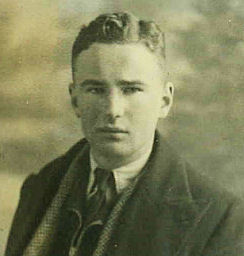
b. Plymouth on August 2 1913 and educated at Plymouth College. He studied Art in Plymouth and Paris but, like so many of his generation, his life changed after a five-shilling flight with Alan Cobham's Flying Circus (q.v.)
"He learned to fly privately, and by the time he was 21 he had obtained his commercial flying, navigation and wireless licences, enabling him to join Imperial Airways.
Initially Ballantine flew as a second officer in the open cockpit of a three-engine Argosy on the Croydon-Brussels-Cologne route; the 20 passengers were able to lounge in wicker chairs.
He then moved on to the stately four-engine HP 42 biplane airliner. With an almost complete lack of navigation aids, locating Croydon airport in poor weather depended on finding the twin towers of Crystal Palace, then setting a stopwatch and descending blind.
Ballantine next flew on the Imperial Airways Empire routes to Africa and Asia, before being appointed to his first command at the age of 23; he was based in Hong Kong, flying the de Havilland DH 86.
During this period he carried out an aerial survey of the route to Bangkok via Hanoi, across the relatively unknown territories of Siam and Indo-China, and he established a 16-hour record for the Rangoon-Calcutta return journey in the DH 86 Delphinus.
Ballantine earned his nickname, "The Colonel", after General Chiang Kai Shek offered him a colonelcy in his nationalist air force - a post which the Englishman prudently declined."
Ballantine was described by a colleague as "tall and debonair. . . quintessentially English, and a genial man of great modesty and charm". During the war, following a spirited party with his fellow pilots, he had crashed his car; he never drove again.
d. Dec 2003
-
Bannister, R
Mr R Bannister I think this must be Flt-Lt W R Bannister, ex-RAF chief instructor of the Herts and Essex Aero Club at Broxborne in 1932; on him "rested the smooth running of the entire flying side".
He formed the London Air Circus at Broxbourne in 1933 to give aerobatics, displays and joyrides.
Killed 2 Oct 1934, when he crashed G-ACPM, a Dragon Rapide of Hillman's Airways, off Folkestone, killing himself and 6 passengers.
His widow was left "totally unprovided for" with five young children, and the Royal Infant Orphanage, Wanstead took them all into its care.
-
Barbour, J
Mr J Barbour 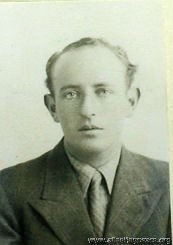
I think this must be John Milne Barbour:
RAeC Certificate 11474 (20th September, 1933);
b. 20 August 1906 in Dunmarry, Ireland. A merchant for the Linen Thread Co., Glasgow
-
Baring, Violet
Violet Baring
Royal Aero Club Certificate 8932 (17 Dec 1929)
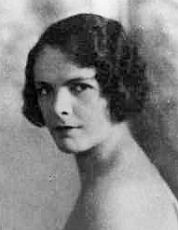 1929
1929b. 1900
b. Violetta Mary Archer in Reading, "A niece of Lady George Dundas, of Newmarket, and also of the Marquess of Zetland."
Married Richard Baring in Jan 1921 but 'divorced him'.
Violet was killed in July 1931 when she and her 'old friend' Philip Noble (to whom she had just sold the aeroplane) crashed in G-EBYK while attempting a forced landing near Wokingham, Berks:
"The woman pilot, who was well-known in Society, and her passenger, a director of Lloyds Bank, who was also an enthusiastic flyer, were killed instantly; both receiving terrible injuries."
John Dennis Turner (q.v.), who said he was engaged to be married to Violet, identified the body and gave evidence at the inquest.
Her house at 23 Earl's Court Square, London, was for sale 'at a low price' by the following January.
-
Barnard, Charles Douglas
Capt Charles Douglas Barnard
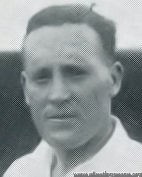 photo: 1930
photo: 1930Personal pilot to the Duchess of Bedford, 'ribald and golden-haired'.
b. 8 Dec 1895 in London; his father, Charles Gilbert Barnard, was a master printer (and not related to Franklyn Barnard's father). He learnt to fly in 1915 with the RFC. After WWI, became a test pilot for Sopwith, then a pilot with the de Havilland Airplane Hire Service after meeting Alan Cobham, then their chief pilot, in Spain.
In July 1920, he was convicted of manslaughter, for killing an elderly man in a car accident in which he failed to stop, and didn't report; "Charles Barnard (24), a demobilised airman from Watford whose machine was brought down in flames in France, was charged with the manslaughter of Alfred Sharp on the night of May 2, by knocking him down whilst driving a motor-car. A button, answering the description of other buttons from the deceased's coat, was found between the bonnet and mudguard of the accused's car. He was remanded, bail being refused." It also turned out that his driving licence had lapsed at the time, and he hadn't renewed it until some days after the accident.
He was given 4 months imprisonment in the 'Second Division' (such prisoners were kept apart from other classes of prisoners, received more frequent letters and visits and wore clothes of a different colour). The Judge said there was "too much reckless driving by people who served in the war. Their war services were no consolation to bereaved relatives."
Settling down a bit after that, he was the pilot in 1923 when an aeroplane belonging to the de Havilland Hire Service was used to ferry Commander Bristow to have a look at an Italian ship, the D'Aosta, which had become stranded in Malta. It was the first time the flight had been made, and it took over 14 hours, mainly (Charles complained) because the authorities in Pisa insisted on a deposit of 15% of the value of the machine.
One of his other jobs for the de Havilland Hire Company was to fly G-EBGT 'Nulli Secundus', a perfectly good D.H.9c, while a certain Captain Spencer jumped out of it - see the video here.
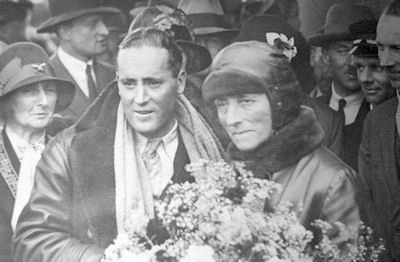
His first long-distance flight with the Duchess of Bedford was a tour in 1927 from her home in Woburn Abbey to France, Spain and North Africa, covering 4,500 miles in 3 weeks. Two years later, he piloted her Fokker monoplane, the 'Spider' to India and back, 10,000 miles in 88.5 hours; the RAeC gave him their Gold Medal for the year. It wasn't their first attempt at the flight to India and back - a year before they had tried the same thing, but problems with the propellor meant that the Duchess had had to come back by steamer from Karachi (which at the time was in India, of course).
In 1928, described as a 'flying man', he was cited as the co-respondent in a divorce case. At the time, he and Mrs Melita Erna May were living together at his place in Monmouth Rd, Bayswater; they got married in December.
In 1930 he and the Duchess made another record flight from London to Cape Town and back, 19,000 miles in 20 days, and he again flew to Malta and back in Puss Moth G-AAXW in 2 days: see the videos here :http://www.britishpathe.com/video/to-the-cape-and-back-in-19-days and here: http://www.britishpathe.com/video/malta-and-back-in-2-daysIn 1931, he was seriously injured when he, Lord Lovelace and their American mechanic crashed near Tripoli, as they were flying to Kenya.His marriage didn't last; Melita left him in 1933 and filed for divorce. He was in court again, when he was accused of assault by Mr Thomas Birks, a solicitor's clerk. Charles, described as a 'civil pilot wth a distinguished record' tried to persuade his wife to return to him, and somehow thought that a revolver might help; Mr Birks tried to intervene, and alleged that Charles fired a shot at him. Charles, however, won the case and was awarded 15 guineas damages (although he had asked for 50).He then formed his 'Flying Circus' - 8 aeroplanes which toured India in 1933 "giving displays of formation and stunt flying to over a million people who have never seen such a thing before... Joy rides will be offered to people at a small charge".He was back again by popular request in 1935, as co-respondent in yet another divorce case - this time with Mariska Marguerite Spurr.d. August 7, 1971. Only 2 people went to his funeral... -
Barnard, Franklyn Leslie
Capt Franklyn Leslie Barnard OBE AFC
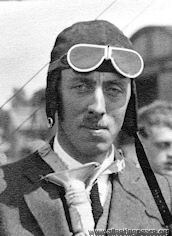 photo: 1925, aged 29
photo: 1925, aged 29 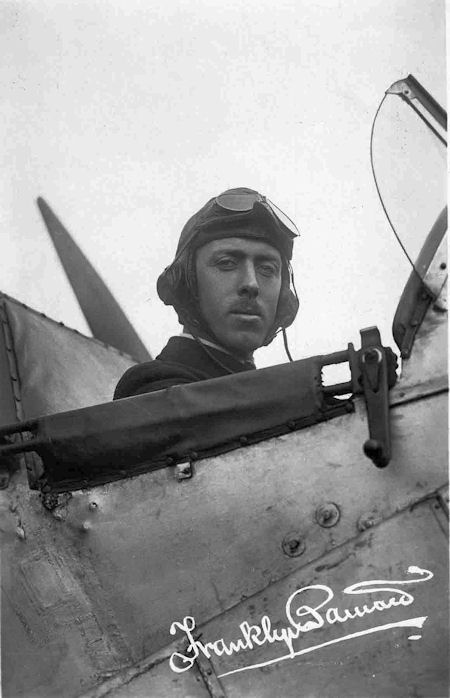
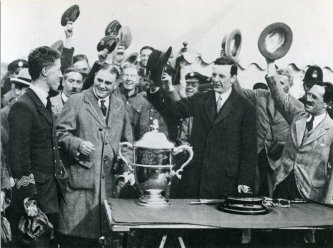
Winner of the first King's Cup in 1922. "an exceptional pilot - careful, skilful, and daring" and "his ability as an engineer was fully equal to his skill as a pilot".
b. 1896; his father, Owen Barnard, was a stockbroker's clerk (and not related to Charles Barnard's father).
AFC in WWI; chief pilot for Instone (later) Imperial Airways. OBE in 1927.
Killed in July 1927 while testing propellers for the Bristol Badminton which he had entered for the King's Cup Race, which crashed at Filton after the engine seized. Major Beaumont, appearing for Imperial Airways at the inquest, said the company felt it had "lost one of the world's magnificent airmen".
1927
It is with profound regret that we have to record the death, as the result of a flying accident on Thursday, July 28, of Capt. F. L. Barnard.
Capt. Barnard—one of our mostexperienced and popular pilots—was carrying out a test flight on the Bristol " Badminton " ("Jupiter VI ") biplane, which had been entered for the King's Cup Air Race, at Filton aerodrome, when, according to eyewitnesses, the engine suddenly stopped and the machine crashed to the ground just outside the 'drome from a height of about 200 ft. When a number of people who had been watching the flight arrived in the field where the machine had crashed, the latter was found completely wrecked, with the engine embedded in the ground, and the unfortunate pilot lying in the cockpit beyond human aid.
From evidence at the inquest, which was held on July 29, it appears that when Capt. Barnard's engine failed, he put the machine into normal gliding angle and attempted to land. While manoeuvring to do so, the machine lost flying speed and stalled from about 80 ft. Capt. Barnard had already made three other test flights on the machine, trying out different airscrews.
Capt. Barnard's loss to the aviation world is a great one indeed, for he was an exceptional pilot, careful, skilful, and daring—but daring only when flying alone or testing. He served in the Air Force during the war, and was awarded the Air Force Cross. Following the Armistice he was pilot to No. 24 Communication Squadron, when he carried many distinguished personages to and from the Continent. He then became associated with Instone Air Lines, and later, when Imperial Airways was formed, was their chief pilot.
His skill as a pilot was such that he was entrusted with many important aerial missions—the most conspicuous of which was the piloting of the Imperial Airways D.H. "Hercules" air liner, carrying Sir Samuel Hoare, Lady Maud Hoare and party from London to Cairo on the inaugural flight of the Egypt-India service. He also, it will be remembered, took part in previous King's Cup races, being the winner in1922 and 1925, and flying last year the Bristol " Badminton "in its original form.
Capt. Barnard leaves a widow and young son, to whom, in common with his many, many friends, we offer our deepest sympathy." - 'Flight'
-
Barrett, John Francis Tuffnell
Flt-Lt John Francis Tuffnell Barrett 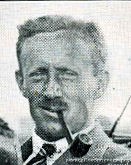
photo: 1930, aged 32
From Surrey. DSO and bar, DFC.
Died in WWII: 3rd September 1941, when a Group Captain, RAF
buried in Berlin's WWII Cemetery
-
Barwick, John Morgan
Mr John Morgan Barwick (RAeC photo missing)
b. 22 November 1908 in London, a Director.
RAeC Certificate 13625, 4th March 1936
'Master of Fox Hounds of the Bedale Hunt'; lived at Firby Hall, Bedale Yorks in 1936.
-
Batten, Jean Gardner
Jean Gardner Batten
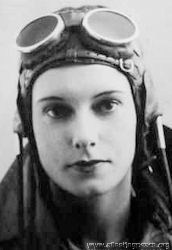 in 1930
in 1930b. 15 September 1909 in Rotorua, New Zealand, a "shy, determined girl".
"By the time I was nineteen I knew my future must be in flying." Studied music from a young age but, having passed the Royal Academy of Music Finals, she sold her beloved piano to get to England and pay for flying lessons.
One of the most spectacularly successful aviators of the early 30s; after her solo flight from England to Australia in 1934 (at the third time of trying) the New Zealand Govermnment awarded her £500 in recognition of her feat. She was in Melbourne a few months later to greet Scott and Campbell Black as winners of the MacRobertson Race, and left Sydney the following April to fly back to England, but didn't quite beat her record.
In November 1935, came her real breakthrough: she flew to Brazil and beat the South Atlantic crossing record, taking 13 hrs 15min in her Percival Gull.
This time, she was awarded:
- the Order of the Southern Cross (by the Brazilians);
- the Gold Medal of the French Academy of Sports;
- the Brittania Trophy (by the Royal Aero Club);
- the C.B.E. for 'general services to aviation';
- the Legion d'Honneur (the French seemed to like her, for some reason);
- the Johnson Memorial Prize (from the Guild of Airline Pilots and Navigators), and
- she was guest of honour in Paris at the Aero Club de France.
In October 1936, having attended literally dozens of receptions and award-giving ceremonies, she set off once more, this time to fly to New Zealand in her Percival Gull. On the way, she beat Harry Broadbent's record solo time to Australia, despite a puncture in the tail tyre which a helpful aerodrome official repaired by stuffing it with face sponges.
Just as Scott and Guthrie were returning rather sheepishly from the miserable Schlesinger Race to Cape Town, Jean was getting ready to fly from Australia to New Zealand. She arrived there on October 17th, met by large and enthusiastic crowds; the first woman to cross the Tasman Sea, the first direct flight from England to New Zealand.
On the last day of 1936, however, Jean's South Atlantic record was beaten by another woman - Mme Maryse Bastié.
In 1937, Jean again won the Brittania Trophy, the Harmon Trophy, and the Segrave Trophy for her 1936 flight. In October she set off for England again; at one stage, she was heading west, trying to beat Harry Broadbent's record, as Harry Broadbent was heading east, trying to break her record. She won; Jean beat Harry's record, while he had to give up at Basra. "I confess I am fed up", he said...
Jean picked up yet more awards; the Gold Medal of the Royal Aero Club; the Gold Medal of the F.A.I. (no less); summoned to Buckingham Palace to meet the King and Queen of the Belgians (exciting); immortalised in Madame Taussaud waxworks (until they melted her down, at least), another round of receptions as guest of honour...
But her brief time in the spotlight was coming to an end. Harry Broadbent took back his Australia-England record; Arthur Clouston and Victor Ricketts more than halved her England-New Zealand record time in 1938. She still attended dinners and receptions in her honour; she wrote her autobiography (called, rather disappointingly, 'My Life'), but she made no more record attempts. Even so, her remaining record, solo to Australia, stood for over 40 years.
In WWII she toured the country as part of the 'Wings for Victory' campaign, giving dozens of lectures anywhere between Manchester and Penzance.
Her Percival Gull, G-ADPR 'Jean' was presented to the Shuttleworth Trust on 26 April 1961, having been requisitioned by the RAF in WWII and then returned to Hunting Aircraft. However, by 1969 it needed major repairs and was grounded until 1978. Jean herself offered to come back from Tenerife to help: "I used to be quite good at stitching canvas on wings". It was sold in the early 90s (when Shuttleworth was strapped for cash) and is now on display at Aukland Airport:
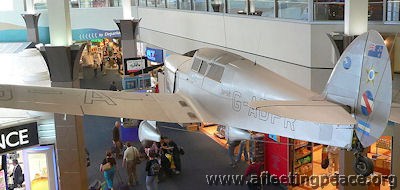
In 1980 she and Edgar Percival were made liverymen of the Guild of Airline Pilots and Navigators, and she then travelled to Hull to open the 'Silver Wings' exhibition, in honour of Amy Johnson.
Jean Batten owned:
a 1929 DH.60G Gipsy Moth, G-AALG, which she flew to New Zealand in 1933;
a 1929 DH.60M Moth, G-AARB, in which she broke the England-Australia record in 1934, and was later owned by Gabrielle Patterson, R Gordon and BK Lyall (simultaneously, that is), and later,
a 1933 DH.60G III Moth Major, G-ACKF.
She died in 1982 in Majorca.
-
Bennett, Donald Clifford Tyndall
Donald Clifford Tyndall Bennett CB CBE DSO RAF 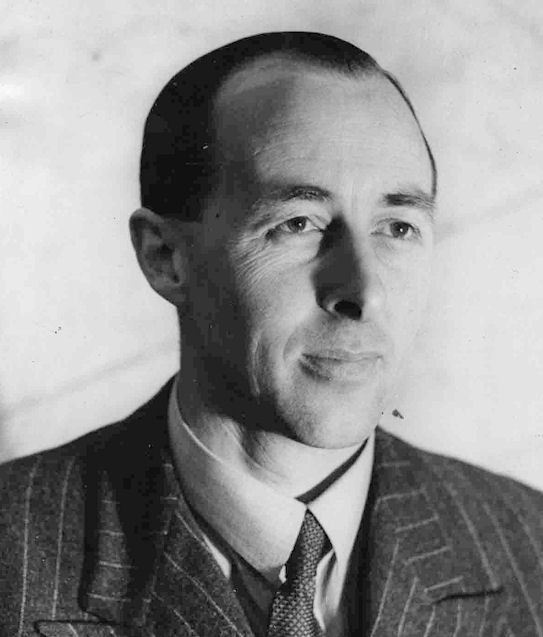
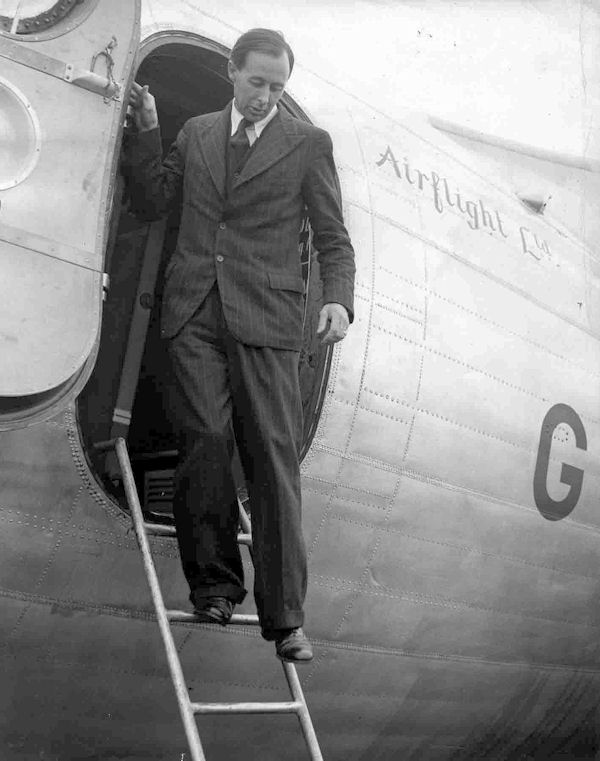
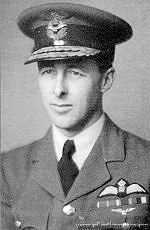
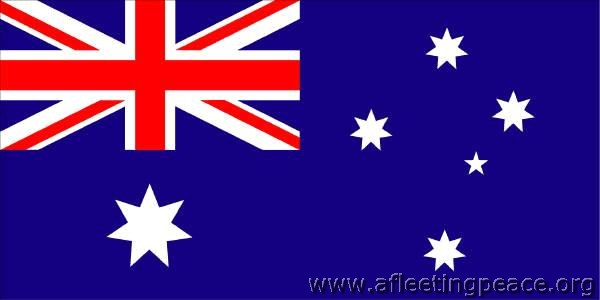 b. 14 September 1910 in Queensland
b. 14 September 1910 in QueenslandWith Imperial Airways, promoted to Senior Master in October 1938
'Pathfinder' Bennett for his work with Bomber Command during WWII. As you probably know, the Pathfinder Force consisted of people who actually knew how to navigate properly, and marked the targets for the bombers.
In May 1945, he became a Liberal M.P.: "Air Vice-Marshal D. C. Bennett, Pathfinder chief and youngest man of his rank in the R.A.F., was returned unopposed to-day as Liberal M.P. for Middlesbrough West."
In 1948 he and his wife bought a couple of transport aircraft, formed AirFlight Ltd, and joined the Berlin airlift to fly dehydrated potatoes to the 2 million population.
CEO of British South American Airways until forced to resign over an interview he gave in 1948.
Opinions varied on what had happened: "SACKED FOR SPEAKING MY MIND-Airway Chief Air Vice-Marshal D. C. T. Bennett has been dismissed from his post as chief executive officer of British South American Airways. The following statement was issued by the British South American Airways Corporation: "The board have terminated the appointment of their chief executive, Air Vice-Marshal D. C. T. Bennett, following differences of opinion on matters of policy.
In a statement, Air Vice-Marshal Bennett said:— "Last week, in view of current misinformation on certain affairs of this corporation, I granted an interview to a newspaper correspondent, at which I expressed views concerning the obvious ills of British civil aviation in general and concerning recent interference with management by the Minister of Civil Aviation. It is because of this that I have been forced to discontinue my appointment. I feel I should make it clear that I have been forced to take this course for exercising what I consider to be a right—the freedom of speech."
"A personally difficult and naturally aloof man, he earned a great deal of respect from his crews but little affection."
He also came 8th in the Monte Carlo Rally of 1953, driving a Jaguar.
Wrote his autobiography in 1958, called, of course, 'Pathfinder'.
Died 15th September 1986, aged 76
-
Bentley, Richard Read
Richard Read Bentley
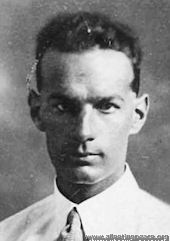 in 1917
in 1917b. 20 November 1897 in London Dick described himself as "one who preferred to live in the open, rather than within the confines of a London office" - one who, luckily, found it possible to make his living mainly by aviation.
His mother having died when he was 12 (he said "I did not then recognise that my father was a broken man due to the loss of my mother"), he and his father had to move from Sheen Gate Mansions to a boarding house in a less fashionable area of London. After a while in an office in a paper merchant's - which he hated - he was packed off to Canada; when he got there, he found that his father had also died.
After a stint as a farm hand in Canada, he came back to England and joined the RFC in WWI (photographic reconnaisance with 59 Sqn, then a flying instructor at Hooton).
Then,"I hung around in London trying to get a job without any luck, like hundreds of other demobs. As I didn’t want to return to Canada I decided to try Rhodesia." He soon fell under Africa's spell, and for quite a long time lived in the jungle and went from job to job, supported by his dwindling RAF gratuity.
He then had "four marvellous years" after joining the South African Air Force - "Whoopee!!! Back on a job I really knew".
When the D.H. Moth first went on sale in 1926, Dick immediately decided he wanted to fly one from London to Cape Town. He raised the £600 he needed from the Johannesburg 'Star', in return for exclusive publicity, and on the 1st September 1927 set out from Stag Lane in G-EBSO, carrying a Mauser pistol generously lent to him by his C.O. Sir Pierre van Rynefeld. Lady Bailey had christened the aircraft 'Dorys', after Dick's then-girlfriend (later his wife), and you can even watch Lady B do her stuff here.
After a "trouble-free" flight, he arrived in Cape Town on the 28th September, completing the first solo flight in a light aircraft from England to Cape Town (and the longest single-engined flight to date, for which he got the RAeC's Britannia Trophy).
The 'Star' unexpectedly presented him with the aircraft (the the original deal was that it would be sold) and he then made his living from air taxi and joy-riding flights. In 1928, he escorted firstly Lady Heath, then Lady Bailey across the Sudan in their record-breaking flights (them women weren't trusted to fly alone, of course).
He and Dorys flew back to England for their honeymoon and then spent a few months at Hooton. On the way back down to Cape Town (yes, again), they met up with Glen Kidston and Donald Drew, who were using a Fokker triplane to do 'aerial safaris'; they offered to give Dorys a lift so that Dick's plane could carry a spare propeller for Stanley Halse's plane (I know this is all very complicated, I'm trying my best). Anyway, the Fokker made a forced landing and Dorys bumped her head quite badly, but was apparently OK. Dick later said that "I have said “apparently” because twenty years later - we had parted in 1938 - in 1948 she died in America of a haemorrhage of the brain. Could that blow received in 1928 have been the root cause of her demise?"
The flying world grew steadily and Dick soon became a ubiquitous figure on the civil aviation scene. "Popular, energetic, resourceful, he was as indifferent to the weather as to the day of the week, joining in the harum-scarum adventures of customers, welcome everywhere.” He flew the Shell Comper Swift G-ABUS, and his aerobatic displays were memorable.
He flew in the RAF(VR) in WWII, remarried (to Anne), then retired.
Dick died in May 1990, aged 93.
All quotes shamelessly lifted from Roma Part's 'Pioneering Spirit', which is on the Johannesburg Light Plane Club's website www.jlpc.co.za
-
Biard, Henri Charles Amedie de la Faye
Capt Henri Charles Amedie de la Faye Biard
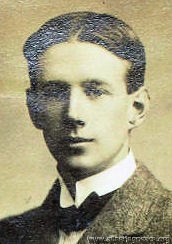 1912, aged 20
1912, aged 20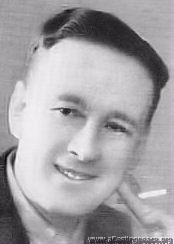 c.1934, aged 42.
c.1934, aged 42.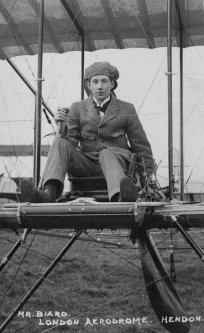
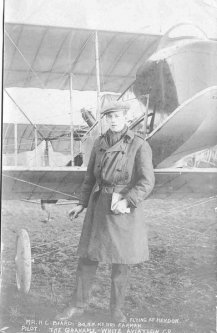
From Jersey; a very early flier, test pilot for Supermarine.
Schneider Trophy pilot in 1922, 23 and 25 (during which he crashed, "making a huge hole in the sea", but emerged merely slightly dazed).
His autobiography is called, er, 'Wings' (1934).
-
Bonham-Carter, David William Frederick
Flt-Lt David William Frederick Bonham-Carter CB, DFC
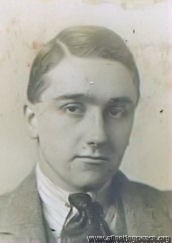 photo: 1921, aged 20
photo: 1921, aged 20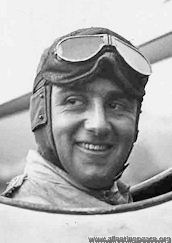 photo: 1930, aged 29
photo: 1930, aged 29No, I don't think he's related to Helena. He was related to Florence Nightingale, though!
b. 22 February 1901; an RAF Officer at Martlesham Heath in 1936, later Group Capt and Station Commander at RAF Waddington in WWII, despite being stone deaf by then; seconded to RCAF and involved in Canada with the Empire Training Plan, then Air Commodore (first President of Newark Air Museum).
Died 1974 in Ipswich.
-
Booth, P A
Lt P A Booth, RN
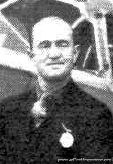
Accompanied Cyril Alington in the Schlesinger Race, attending to the "navigation and such duties".
A Supernumary Instructor at the School of Naval Co-operation, Lee-on-Solent.
-
Bowes, George Henry
Flt-Lt George Henry Bowes 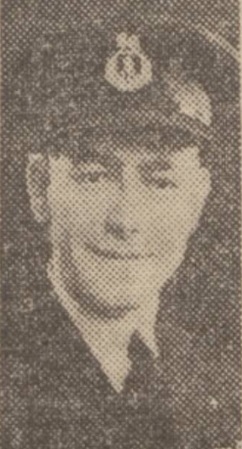
 the Imperial War Museums
the Imperial War Museumsd. 19/20 Jun 1941, one of 9 killed when Shorts S26 Flying Boat X8274 ('Golden Fleece') crashed at sea off Cape Finisterre en route to Cairo; Commemorated on the Runnymede Memorial, Panel 29.
28 June 1941: "GOOLE OFFICER MISSING. FORMER IMPERIAL AIRWAYS PILOT Flight-Lieut. G. H. Bowes, youngest son of Mrs and the late Mr G. H. Bowes, of Carter-street, Goole, and a former Imperial Airways pilot, is officially reported missing.
Flight-Lieut. Bowes attended Goole St. John's National School and Hull Technical College as a boy. He joined the R.A.F. in 1930, and served in Egypt during the Italo-Abyssinian dispute, rising to the rank of sergeant pilot. Later he was a test pilot. In 1936 he entered the service of Imperial Airways, and the following year he was First officer and navigator on the flying boat Caledonia, which made the first experimental transatlantic flight between Foynes (Ireland) and Botwood (Newfoundland).
He crossed the Atlantic 10 times, and also piloted 'planes on the Near and Far East services. On the outbreak of war Flight-Lieut Bowes rejoined the R.A.F.
During the German invasion of Norway he was wounded in the knee and bombed out of hospital, but was safely evacuated to Scotland. While in hospital there he became engaged to Miss Joan Walker of Greenock, and was married last November. Flight-Lieutenant Bowes has a nephew, Sergeant-Pilot Bowes, of Fourth-avenue, Goole, who also joined the R.A.F. before the war, and is a prisoner in Germany."
Page 2 of 23

